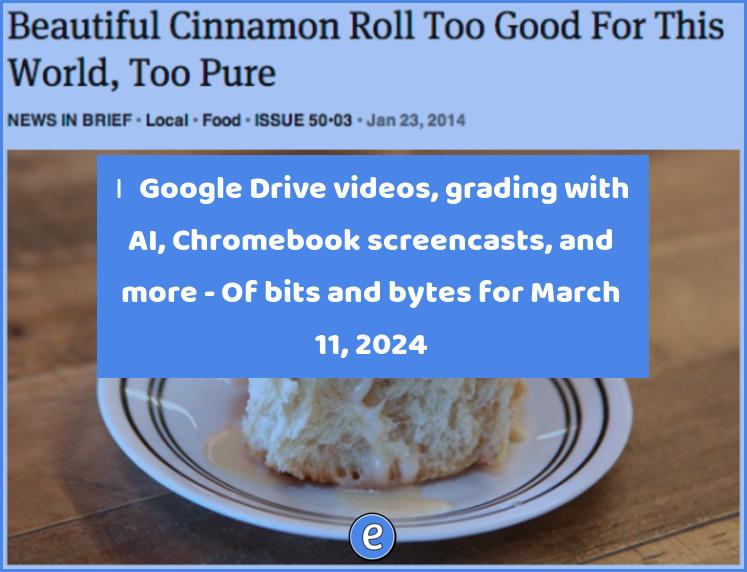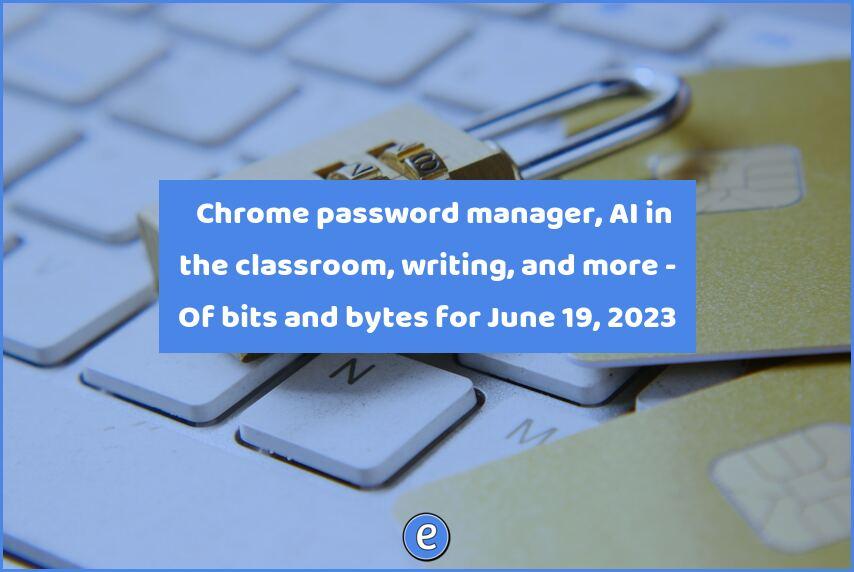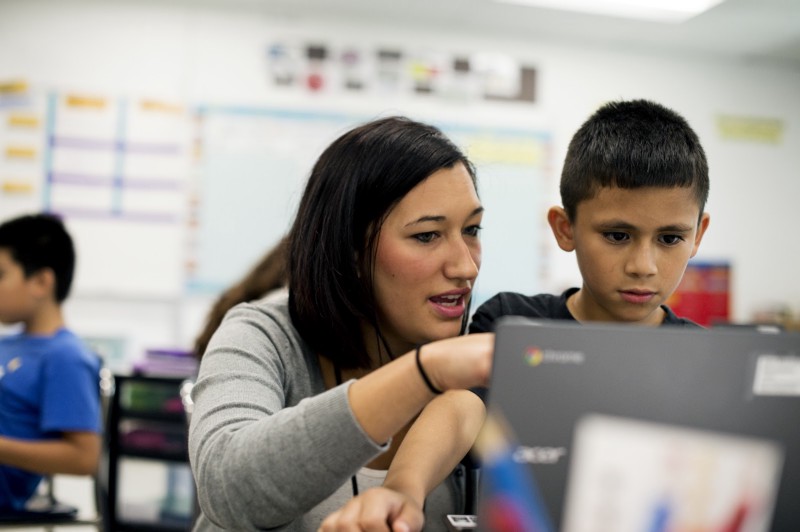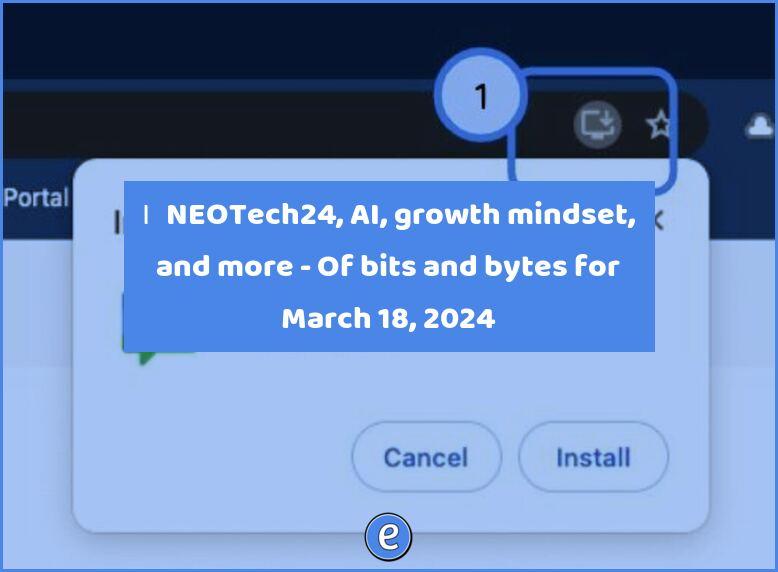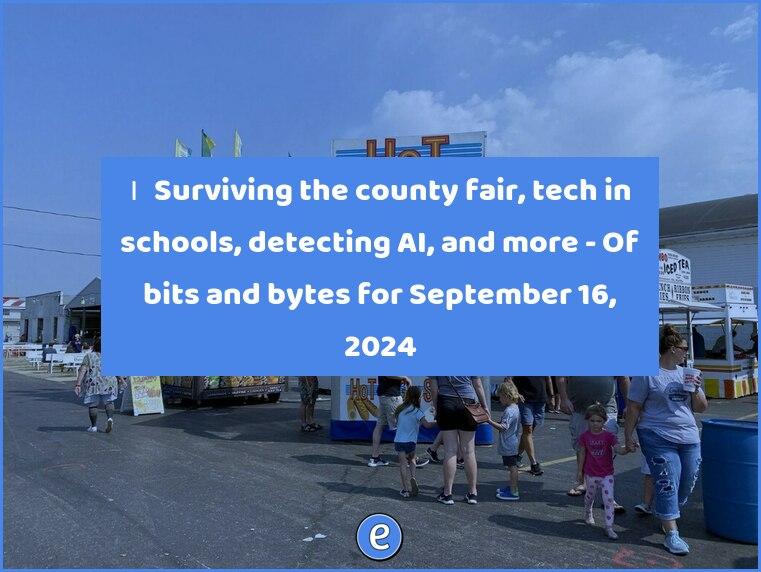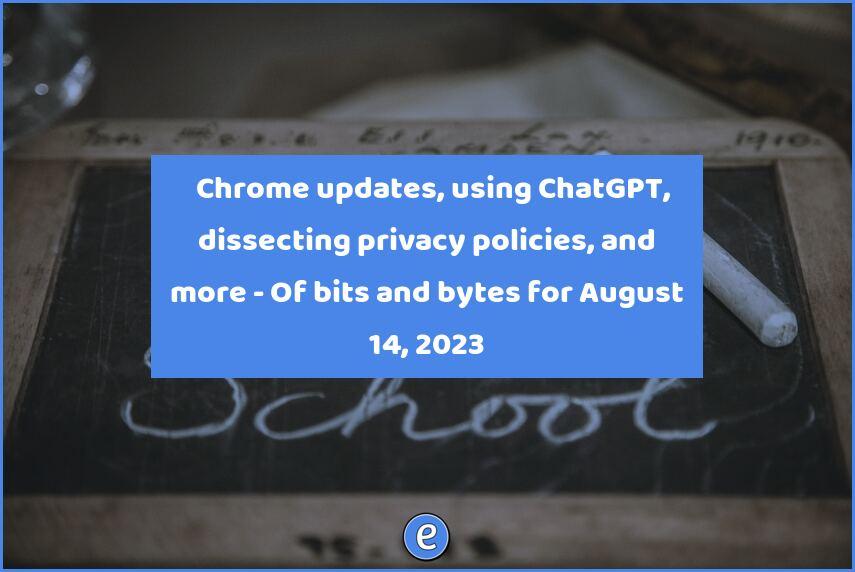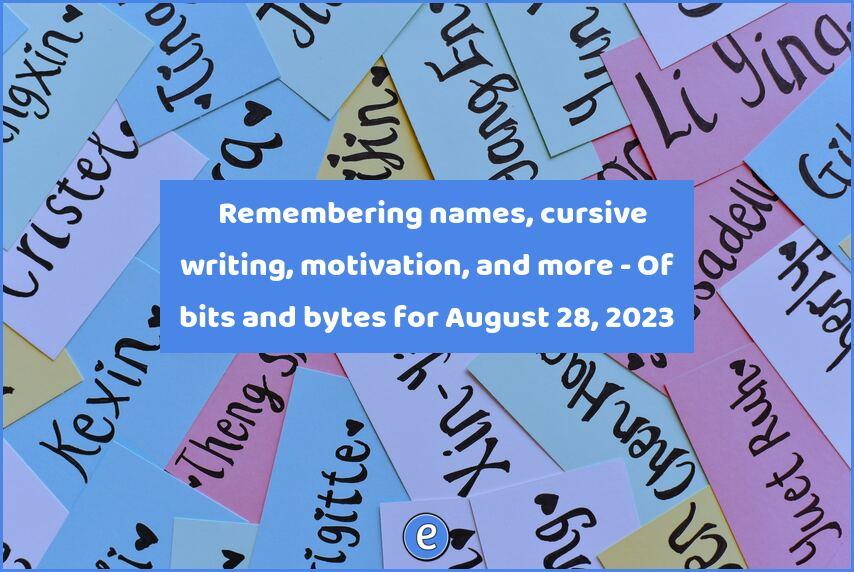🙋♂️ Google Drive videos, grading with AI, Chromebook screencasts, and more – Of bits and bytes for March 11, 2024
Internet Travels
Of bits and bytes is my weekly round up of interesting links and ideas I discovered on the internet. It is published on Mondays for the previous week
Learn21 is a proud sponsor of Eduk8me and the Of Bits and Bytes newsletter. Read more about their mission at Learn21.
Apps
Google announced three updates to Google Workspace this past week. Out of the 3, the improved video player for Google Drive is my favorite. The update makes playing videos from Google Drive start quicker and play more reliably.
Having an app store sounds dated after hearing that Google is planning an App Mall for Chromebooks. Not much is known about this new feature at this point, but it is speculated that it will unite the three types of apps a Chromebook can run, hence the term mall instead of store. No word on whether Sbarro, Auntie Anne’s Pretzels, or Cinnabon will make an appearance.
Beautiful Cinnamon Roll Too Good For This World, Too Pure | Know Your Meme
Pedagogy
In most professions using tools to ease the workload is viewed as smart and sensible, but in education working smarter is sometimes viewed as lazy. However, I’m not totally sold on the idea of teachers using ChatGPT to grade papers.
This reminds me of an article I read several years ago (and I can’t find it now) about teachers outsourcing their grading to services like Amazon Mechanical Turk and Fiverr. By removing identifiable information from papers and having each paper graded by multiple people, the teachers were able to evaluate their students in a way that was faster than reading everything themselves. Were the evaluations better? That would be a good question to ask. Hopefully I’ll stumble upon the article at some point.
One harsh reality of AI is the need to re-evaluate how we assess student learning. Lecturers at Harvard challenged their students with a dilemma, and after an hour of discussion, compared their responses with ChatGPT (h/t – Miguel Guhlin). The students were shocked at how alike the responses were, “We were just saying formulaic, buzzworthy stuff instead of talking about anything new like we said we wanted to when class started”.
Our daughter was 6 when the iPad was released, so the limits of screen time were more for TV than technology. (Sidebar: I am shocked at how little TV I watch nowadays.) The first two years were tough, not allowing her to watch any TV which meant we didn’t get to watch TV. But, we persevered. Today, phones and tablets are in the position of the TV was in the past, and the downsides of that screen time is now showing up in schools with students who can’t regulate their emotions.
There is now another downside to screen time when kids are young, they have less conversations with adults, stunting their learning of language (Archive). I’ve seen parents defend the screen time of their kids, and I am empathetic, I’ve been there. However, tantrums, anger, and frustrations are all emotions that children need to experience and more importantly, learn how to deal with.
95% of my screen time is reddit : memes
Technology
Will humans create anything in the future? I, of course, say yes, but I’ve seen enough science fiction to know that is only one possible outcome. What makes me optimistic at the moment is that AI doesn’t do anything without human input. It just sits there. It has no dreams, no aspirations, no motivation.
Google is a behemoth, so it is in there best interest to show what steps they’re taking to supporting kids online.
A school in England is offering dumbphones for children between the age of 4 and 11 at a low or no cost to parents as an alternative to the parents buying the student a smartphone. I’m more along the lines of, what?
AI is learning the art of trolling its researchers. Anthropic’s Claude 3 was being tested by researchers, and it let them know it knew what was happening.
The Best Memes about AI – by Mark McNeilly – Mimir’s Well
Tips
I haven’t used the screencast tools on the Chromebook, but it features such as editing the screencast using the transcript makes me realize I need to check it out. Too bad Google hasn’t enabled this features on the desktop version of Chrome, but they want you to use a Chromebook, not Windows or macOS.
My go to tool for recording screencasts on Windows, macOS, and Linux is Open Broadcaster Software (OBS) and edit in DaVinci Resolve but that is overkill for a lot is use cases. For most cases I use Canva. It’s quick and the built in templates give the screencasts a pretty professional flair.
Potpourri
Seth Godin re-surfaced his book Graceful available for free. It is all about making a difference in the world.
When you are in the “flow”, you are an unstoppable creative beast. Researchers are looking into how the brain enters the flow and what it can mean for creative pursuits.
What goes on in your brain when you’re not doing anything? A lot!
Extra Credit
Here are extra links that I found interesting that may or may not be education related or interesting to you and I didn’t want to lose them.
- Opinion | The ‘Mean Girls’ Movie Is Nicer. Teens Are Not. – The New York Times (Archive) – The changes to the musical version reminded me how different things were 20 years ago.
- ‘All it takes is a quick walk’: how a few minutes’ exercise can unleash creativity – even if you hate it | Health & wellbeing | The Guardian – Don’t go all out though!
- AI Outshines Humans in Creative Thinking – Neuroscience News – But it doesn’t do anything if someone isn’t in the driver’s seat.
By design, the vast majority of Of Bits and Bytes readers never pay anything for the links, commentary, and tips it provides. But you made it all the way to the end of this week’s edition — maybe not for the first time. Want to support more journalism like what you read today? If so, click here.

Be sure to subscribe to my YouTube channel and join your fellow educators on the Eduk8me email list!
